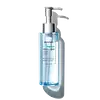What's inside
What's inside
 Key Ingredients
Key Ingredients

 Benefits
Benefits

 Concerns
Concerns

 Ingredients Side-by-side
Ingredients Side-by-side

Water
Skin ConditioningPotassium Cocoyl Glycinate
Panthenol
Skin ConditioningPotassium Cocoate
EmulsifyingAcrylates/Steareth-20 Methacrylate Crosspolymer
Sodium Lauroamphoacetate
CleansingCentella Asiatica Extract
CleansingGlycerin
HumectantDecyl Glucoside
CleansingCeramide NP
Skin ConditioningCeramide Ns
Skin ConditioningCeramide As
Skin ConditioningCeramide EOP
Skin ConditioningCeramide AP
Skin ConditioningSodium Polyaspartate
HumectantButylene Glycol
HumectantPentylene Glycol
Skin ConditioningPropanediol
SolventMethyl Diisopropyl Propionamide
MaskingEthyl Menthane Carboxamide
TonicMenthyl Lactate
MaskingHydroxypropylcellulose
EmulsifyingIsopropyl Palmitate
EmollientTrehalose
HumectantSerine
MaskingAlgin
MaskingCaprylyl Glycol
EmollientSodium Hyaluronate
HumectantPullulan
Disodium Phosphate
BufferingPotassium Phosphate
BufferingHydrogenated Lecithin
EmulsifyingPolyglyceryl-10 Stearate
Skin ConditioningEthylhexylglycerin
Skin ConditioningWater, Potassium Cocoyl Glycinate, Panthenol, Potassium Cocoate, Acrylates/Steareth-20 Methacrylate Crosspolymer, Sodium Lauroamphoacetate, Centella Asiatica Extract, Glycerin, Decyl Glucoside, Ceramide NP, Ceramide Ns, Ceramide As, Ceramide EOP, Ceramide AP, Sodium Polyaspartate, Butylene Glycol, Pentylene Glycol, Propanediol, Methyl Diisopropyl Propionamide, Ethyl Menthane Carboxamide, Menthyl Lactate, Hydroxypropylcellulose, Isopropyl Palmitate, Trehalose, Serine, Algin, Caprylyl Glycol, Sodium Hyaluronate, Pullulan, Disodium Phosphate, Potassium Phosphate, Hydrogenated Lecithin, Polyglyceryl-10 Stearate, Ethylhexylglycerin
Water
Skin ConditioningPotassium Palm Kernelate
CleansingPotassium Cocoate
EmulsifyingPotassium Cocoyl Glycinate
Sodium Cocoyl Glycinate
CleansingLauryl Hydroxysultaine
CleansingMilk Protein Extract
Glycol Distearate
EmollientNiacinamide
SmoothingArginine
MaskingCeramide EOP
Skin ConditioningCeramide Ns
Skin ConditioningCeramide NP
Skin ConditioningCeramide As
Skin ConditioningCeramide AP
Skin ConditioningPropylene Glycol
HumectantPotassium Palmitate
EmulsifyingSodium Methyl Lauroyl Taurate
CleansingSodium Chloride
MaskingHydroxypropyl Methylcellulose
Emulsion StabilisingPolyquaternium-43
Polyquaternium-7
Stearic Acid
CleansingHydroxystearic Acid
CleansingMethylparaben
PreservativePropylparaben
PreservativeSodium Benzoate
MaskingAroma
Water, Potassium Palm Kernelate, Potassium Cocoate, Potassium Cocoyl Glycinate, Sodium Cocoyl Glycinate, Lauryl Hydroxysultaine, Milk Protein Extract, Glycol Distearate, Niacinamide, Arginine, Ceramide EOP, Ceramide Ns, Ceramide NP, Ceramide As, Ceramide AP, Propylene Glycol, Potassium Palmitate, Sodium Methyl Lauroyl Taurate, Sodium Chloride, Hydroxypropyl Methylcellulose, Polyquaternium-43, Polyquaternium-7, Stearic Acid, Hydroxystearic Acid, Methylparaben, Propylparaben, Sodium Benzoate, Aroma
 Reviews
Reviews

Ingredients Explained
These ingredients are found in both products.
Ingredients higher up in an ingredient list are typically present in a larger amount.
Ceramide AP is formally known as Ceramide 6.
Ceramides are intercellular lipids naturally found in our skin that bonds dead skin cells together to create a barrier. Having a strong skin barrier leads to more firm and hydrated skin.
They are known for their ability to hold water and thus are a great ingredient for dry skin. By bolstering the skin ceramides act as a barrier against irritating ingredients. This can help with inflammation as well.
If you would like to eat ceramides, sweet potatoes contain a small amount.
Read more about other common types of ceramides here:
Ceramide NP
Ceramide EOP
Ceramide AS is formally known as Ceramides 4 and 5.
Ceramides are intercellular lipids naturally found in our skin that bonds dead skin cells together to create a barrier. They are known for their ability to hold water and thus are a great ingredient for dry skin.
Ceramide EOP is formally known as Ceramide 1 and Ceramide 1 A.
EOP stands for a linked Ester fatty acid, a linked Omega hydroxy fatty acid, and the Phytosphingosine base.
Ceramides are intercellular lipids naturally found in our skin. They bind dead skin cells together to create a barrier. The ceramides in our skin have the ability to hold water to keep our skin hydrated.
Ceramides are an important building block for our skin barrier. A strong skin barrier helps with:
If you would like to eat ceramides, sweet potatoes contain a small amount.
Read more about other common types of ceramides here:
Learn more about Ceramide EOPCeramide NP is a type of ceramide and formally known as ceramide 3.
Ceramides are intercellular lipids naturally found in our skin that bonds dead skin cells together to create a barrier. They are known for their ability to hold water and thus are a great ingredient for dry skin.
Ceramides are an important building block for our skin barrier. A stronger barrier helps the skin look more firm and hydrated. By bolstering the skin ceramides act as a barrier against irritating ingredients. This can help with inflammation as well.
If you would like to eat ceramides, sweet potatoes contain a small amount.
Read more about other common types of ceramides here:
Ceramide AP
Ceramide EOP
Ceramide NS is formally known as Ceramide 2. It is one of the major ceramides in the stratum corneum (outermost layer of skin) plays a role in forming a protective barrier.
Due to its structure, skin lipids can be packed tightly and in turn, this strengthens the barrier and reduces water loss.
Studies show conditions like atopic dermatitis can worsen when ceramide NS levels are low.
Learn more about Ceramide NsThis ingredient is the potassium salt of coconut acid. Coconut acid is created by mixing fatty acids from coconut oil.
It is an emulsifier, surfactant, and cleanser. According to a manufacturer, it contains glycerin.
Potassium Cocoyl Glycinate is an amino acid-based surfactant and cleaning agent. This ingredient can be derived from animals or plants. It may also be synthetically created from fatty acids of the coconut and glycine.
Potassium Cocoyl Glycinate is a gentle surfactant. Surfactants help gather the dirt, oil, and other pollutants from your skin to be rinsed away. It is a mild cleanser and naturally produces foam.
Water. It's the most common cosmetic ingredient of all. You'll usually see it at the top of ingredient lists, meaning that it makes up the largest part of the product.
So why is it so popular? Water most often acts as a solvent - this means that it helps dissolve other ingredients into the formulation.
You'll also recognize water as that liquid we all need to stay alive. If you see this, drink a glass of water. Stay hydrated!
Learn more about Water